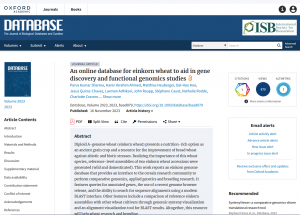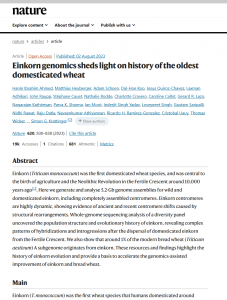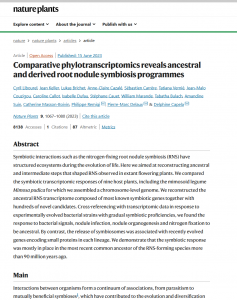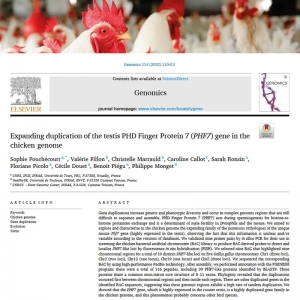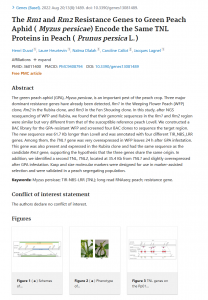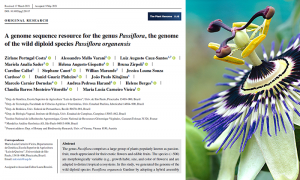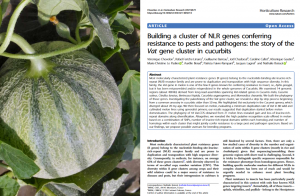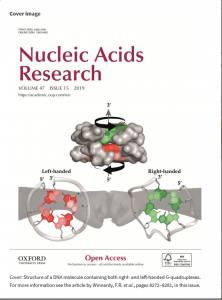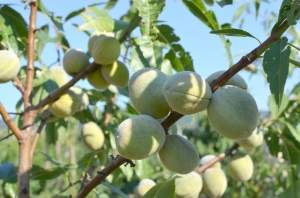
Arrival date : 2016
Status : Research Technician
Roles :
Last completed degree : Bachelor of Applied Biology for Plant Productions and Agri-Food Industries (PVIAA)
Professional experiences :
Phylogenetic inferences in Passiflora based on the analysis of chloroplast genomes
Something went wrong when connecting to PubMed API.
Click here to access to the publication on PubMed website

Phylogenetic inferences in Passiflora based on the analysis of chloroplast genomes
Using chloroplast genome sequences (cpDNA), our research group has carried out phylogenomic analyses that resulted in strongly supported trees, providing a better understanding of the evolutionary relationships in the Malpighiales and the Fabids' clade...
Read more
The genus Passiflora consists of some 520 species, 145 of which occur in Brazil, and 83 are endemic to the country. The classical taxonomy, proposed on the basis of floral and vegetative structures, subdivided the genus into 22 subgenera. However, molecular phylogenetic analyses did not confirm that infrageneric subdivision, reducing the number of subgenera to four: Astrophea, Decaloba, Deidamioides and Passiflora, being Astrophea the more ancestral subgenus. Three clades were recognized as monophyletic (Astrophea, Decaloba, and Passiflora), but the position of Deidamioides remained unresolved, as this particular clade was found to be paraphyletic based on current data. Using chloroplast genome sequences (cpDNA), our research group has carried out phylogenomic analyses that resulted in strongly supported trees, providing a better understanding of the evolutionary relationships in the Malpighiales and the Fabids' clade. This analysis included the cpDNA of Passiflora edulis. In this context, the same approach will be applied to perform an evolutionary study in Passiflora, aiming to help to resolve the question about the status of the subgenus Deidamioides. The cpDNA of P. edulis revealed rearrangements that led to changes in the order of some genes. We suggest that these rearrangements may be associated to the infrageneric division. Moreover, the genes rpl22 and accD have been lost in P. edulis cpDNA and possibly were exported to the nucleus. We will investigate this finding, aiming to verify our hypothesis. The cp genome annotation is a crucial step, due to the presence of inverted repeat sequences and rearrangements. Therefore, we propose to use long sequence reads for generating accurate biological information to be use in the phylogenetic analyses. In this project we will perform field work aiming to collect 50 species of Passiflora, building two specimen-vouchered DNA banks: cpDNA and total DNA, and a selection of these will have their plastomes sequenced to answer the questions in a phylogenomic and evolutionary context.
Collaborators:
- Dra. Maria Lucia Carneiro Vieira (Main responsible)
Escola Superior de Agricultura "Luiz de Queiroz" /Universidade de São Paulo
Genetics Department
Avenida Pádua Dias, nº11 – Agronomia
13400-970 Piracicaba, Brasil
Phone: 55 19 3429 4442
- Dr. Cássio Van den Berg
Universidade Estadual de Feira de Santana/
Bahia ,Brazil
Publications:
Responsible CNRGV: Caroline Callot
Genomic analyses reveal of self-incompatibility in Capsella
Something went wrong when connecting to PubMed API.
Click here to access to the publication on PubMed website
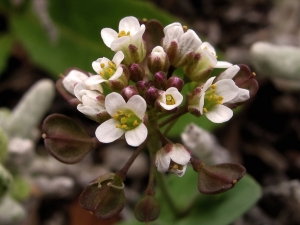
Genomic analyses reveal of self-incompatibility in Capsella
This project aims at characterizing the genetic basis and timing of loss of SI in the self-fertilizing crucifer species Capsella orientalis using complementary approaches (long read sequencing of multiple full-length S-haplotypes, genetic mapping, population genomics and expression analyses).
Read more
This project aims at characterizing the genetic basis and timing of loss of SI in the self-fertilizing crucifer species Capsella orientalis using complementary approaches (long read sequencing of multiple full-length S-haplotypes, genetic mapping, population genomics and expression analyses).
Plants have many intricate mechanisms to promote outcrossing. A common mechanism is self-incompatibility (SI), which allows recognition and rejection of self pollen through male and female specificity components, encoded at the S-locus. Despite the benefits of outcrossing, SI has repeatedly been lost. Theory predicts that mutations disrupting SI spread at different paces depending on whether they affect male or female functions, involve unlinked modifiers and whether they are dominant or recessive, but the importance of parallel changes for loss of SI remains unclear. The crucifer genus Capsella offers an excellent opportunity to study multiple transitions from outcrossing to self-fertilization, but so far, little is known about the genetic basis and timing of loss of SI in the self-fertilizing diploid Capsella orientalis.
Collaborators
Tanja Slotte: Department of Ecology, Environment and Plant Sciences, Science for Life Laboratory, Stockholm University, SE-106 91 Stockholm, Sweden,
ClaudiaKöhler : Department of Plant Biology, Swedish University of Agricultural Sciences & Linnean Center for Plant Biology, SE-75 007 Uppsala, Sweden,
Vincent Castric Unité Evo-Eco-Paléo (EEP) - UMR 8198, CNRS/Université de Lille - Sciences et Technologies, Villeneuve d'Ascq Cedex, F-59655, France, 5Equal contributions
Responsible
William Marande, Caroline Callot
Identifying sequences associated with virus tolerance in cassava
Something went wrong when connecting to PubMed API.
Click here to access to the publication on PubMed website

Identifying sequences associated with virus tolerance in cassava
Geminiviruses represent an important threat to crop production and food security as they are the causal agents of viral diseases in tropical and temperate staple crops. Understanding natural host resistance opens new perspectives to reduce the negative impact of viral diseases on crop production...
Read more
Geminiviruses represent an important threat to crop production and food security as they are the causal agents of viral diseases in tropical and temperate staple crops. Understanding natural host resistance opens new perspectives to reduce the negative impact of viral diseases on crop production.
Cassava geminiviruses (CGMs) are the causal agents of cassava mosaic disease (CMD), the most widespread and devastating disease of cassava. Natural host tolerance against CGMs has been identified in the cassava germplasm and extensively used in order to breed CMD tolerant varieties. Despite the important use of the so-called CMD2-based dominant monogenic resistance, tolerance mechanisms have not yet been characterized in cassava.
A whole genome and targeted genome sequencing approach have been used to determine the genomic structure of the CMD2 locus. Despite a relatively good resolution in the CMD2 locus, the project will further increase the resolution by BAC sequencing approach. BAC sequencing approach will contribute to the precise characterization of the polymorphism in the CMD2 region of cassava accessions contrasting for geminivirus tolerance.
Project coordinator:
Plant Genetics Lab, AgroBioChem Department, Gembloux Agro Bio-Tech,
University of Liège, Belgium
Bâtiment 48 N-1 // Room 48-01-40
Avenue Maréchal Juin
5030 Gembloux
Belgium
Represented by Pr Herve Vanderschuren
Email: herve.vanderschuren@ulg.ac.be
Tel: +32 81 62 25 71
Website: http://www.gembloux.ulg.ac.be/plant-genetics/
CNRGV involvement:
Responsible: Caroline Callot and William Marande
BAC libraires construction – screening – BAC clone sequencing
Pyramiding strategy for durable resistance to root-knot nematodes in Prunus Rootstocks
Something went wrong when connecting to PubMed API.
Click here to access to the publication on PubMed website

Pyramiding strategy for durable resistance to root-knot nematodes in Prunus Rootstocks
Root-knot nematodes (RKN) (Meloidogyne spp.) are extremely polyphagous pests with a high economic impact at the global scale. In stone fruit trees, three major dominant resistance (R) genes, Ma (plum),RMia (peach) and RMja (almond), have been identified and mapped in this objective. Pyramiding all three R genes opens the way to breeding rootstocks protected by at least two of them for a durable resistance...
Read more
Project coordinator:
INRA-GAFL
Henri Duval
Domaine St Maurice, CS 60094
84143 Montfavet Cedex, France
Email : Henri.duval@inra.fr
Phone : 33 4 32 72 26 67
Project partners:
INRA, UMR ‘Institut Sophia Agrobiotech’ (ISA), F-06903 Sophia Antipolis, France
Cyril Van Ghelder, Simon Saucet, Daniel Esmenjaud
CEP Innovation , 69364 LYON
Abstract
Root-knot nematodes (RKN) (Meloidogyne spp.) are extremely polyphagous pests with a high economic impact at the global scale. In stone fruit trees, three major dominant resistance (R) genes, Ma (plum),RMia (peach) and RMja (almond), have been identified and mapped in this objective. Pyramiding all three R genes opens the way to breeding rootstocks protected by at least two of them for a durable resistance. The Ma gene has been characterized and cloned from a BAC and genetic markers have been developed for using in SAM. After high-resolution mapping, the two other genes, RMia (peach) and RMja (almond) have been located and mapped on the peach genome, but their sequences were partially aligned on the peach genome.
The objective of the project is to construct 2 BAC libraries from the resistant parents Alnem almond and Nemared peach, to screen two new BAC clones, including each gene and to sequence the BAC clones on the PacBio RSII sequencer. With the complete sequences of the Rmja and RMia clusters, it will be possible to apply a functional validation by the hairy-roots techniques and to develop new genetic markers for the SAM. New three ways hybrids ((peach x almond) x plum) have been created and it will be possible to select those with two or three R genes.
It will be possible also to study the polymorphism in the gene and in the regulatory region of the genes, between diploid Prunus species, plum, almond and peach.
CNRGV's responsible: Caroline Callot
CNRGV's involvement:
BAC libraries construction - Screening
Publications:
Duval, H., Hoerter, M., Polidori, J., Confolent, C., Masse, M., Moretti, A., Van Ghelder, C. and Esmenjaud, D. 2014. High resolution mapping of the RMia gene for resistance to root-knot nematodes in peach. Tree Genetics and Genomes 10 (2): 297-306.
Saucet SB, Van Ghelder C, Abad P, Duval H, Esmenjaud D. Resistance to root-knot nematodes Meloidogyne spp. in woody plants. New Phytol. 2016 Jul;211(1):41-56.
An online database for einkorn wheat to aid in gene discovery and functional genomics studies
Something went wrong when connecting to PubMed API.
Click here to access to the publication on PubMed website
Einkorn genomics sheds light on history of the oldest domesticated wheat
Something went wrong when connecting to PubMed API.
Click here to access to the publication on PubMed website
Comparative phylotranscriptomics reveals ancestral and derived root nodule symbiosis programmes
Something went wrong when connecting to PubMed API.
Click here to access to the publication on PubMed website
Expanding duplication of the testis PHD Finger Protein 7 (PHF7) gene in the chicken genome
Something went wrong when connecting to PubMed API.
Click here to access to the publication on PubMed website
The Rm1 and Rm2 Resistance Genes to Green Peach Aphid ( Myzus persicae) Encode the Same TNL Proteins in Peach ( Prunus persica L)
Something went wrong when connecting to PubMed API.
Click here to access to the publication on PubMed website
A genome sequence resource for the genus Passiflora, the genome of the wild diploid species Passiflora organensis
Something went wrong when connecting to PubMed API.
Click here to access to the publication on PubMed website
Building a cluster of NLR genes conferring resistance to pests and pathogens: the story of the Vat gene cluster in cucurbits
Something went wrong when connecting to PubMed API.
Click here to access to the publication on PubMed website
A repertory of rearrangements and the loss of an inverted repeat region in Passiflora chloroplast genomes
Something went wrong when connecting to PubMed API.
Click here to access to the publication on PubMed website
A receptor-like kinase enhances sunflower resistance to Orobanche cumana
Something went wrong when connecting to PubMed API.
Click here to access to the publication on PubMed website
μLAS technology for DNA isolation coupled to Cas9-assisted targeting for sequencing and assembly of a 30 kb region in plant genome
Something went wrong when connecting to PubMed API.
Click here to access to the publication on PubMed website
Genetic basis and timing of a major mating system shift in Capsella
Something went wrong when connecting to PubMed API.
Click here to access to the publication on PubMed website
Ma Orthologous Genes in Prunus spp. Shed Light on a Noteworthy NBS-LRR Cluster Conferring Differential Resistance to Root-Knot Nematodes
Something went wrong when connecting to PubMed API.
Click here to access to the publication on PubMed website
Extraction of high-molecular-weight genomic DNA for long-read sequencing of single molecules
Something went wrong when connecting to PubMed API.
Click here to access to the publication on PubMed website
Extraction of high-molecular-weight genomic DNA for long-read sequencing of single molecules
Biotechniques. 2016 Oct 1;61(4):203-205.
Read more
Authors
Mayjonade B, Gouzy J, Donnadieu C, Pouilly N, Marande W, Callot C, Langlade N, Muños S.
Biotechniques. 2016 Oct 1;61(4):203-205.
Abstract
De novo sequencing of complex genomes is one of the main challenges for researchers seeking high-quality reference sequences. Many de novo assemblies are based on short reads, producing fragmented genome sequences. Third-generation sequencing, with read lengths >10 kb, will improve the assembly of complex genomes, but these techniques require high-molecular-weight genomic DNA (gDNA), and gDNA extraction protocols used for obtaining smaller fragments for short-read sequencing are not suitable for this purpose. Methods of preparing gDNA for bacterial artificial chromosome (BAC) libraries could be adapted, but these approaches are time-consuming, and commercial kits for these methods are expensive. Here, we present a protocol for rapid, inexpensive extraction of high-molecular-weight gDNA from bacteria, plants, and animals. Our technique was validated using sunflower leaf samples, producing a mean read length of 12.6 kb and a maximum read length of 80 kb.
Something went wrong when connecting to PubMed API.
Click here to access to the publication on PubMed website
Something went wrong when connecting to PubMed API.
Click here to access to the publication on PubMed website
Something went wrong when connecting to PubMed API.
Click here to access to the publication on PubMed website
Something went wrong when connecting to PubMed API.
Click here to access to the publication on PubMed website
Something went wrong when connecting to PubMed API.
Click here to access to the publication on PubMed website
Something went wrong when connecting to PubMed API.
Click here to access to the publication on PubMed website
Something went wrong when connecting to PubMed API.
Click here to access to the publication on PubMed website
Something went wrong when connecting to PubMed API.
Click here to access to the publication on PubMed website

